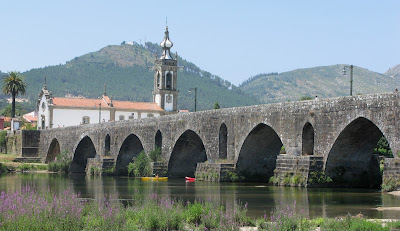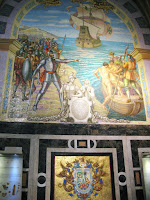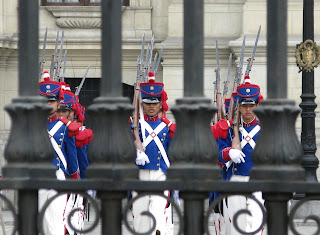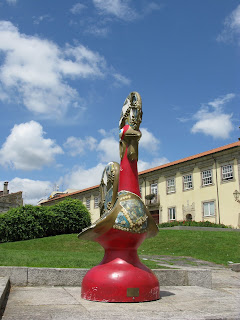High expectations and ...
I visualize Mexico with pyramids, exotic pre-Columbian culture and beaches. Mexico City, also called the District Federal, is a different world. The metropolitan area of Mexico City accounts for approximately 22 million. It is a huge city for the European standards.
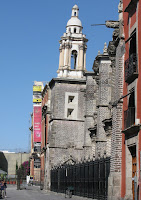
The city was founded on an island on Lake Texcoco by the Aztecs. As the city grew the lake and swamps were dried and filled up to create space for new constructions. In result today’s city, and in particular its historic part, is gradually sinking. It is also a seismic zone which suffers for earthquakes every some time. So don’t be surprised with all those leaning buildings, and the best ones to see and feel it, are the Church of St. Francis, the Cathedral and the Shrine of Guadalupe.
A good starting point of a city walk is the Torre Latinoamericana. It was first Mexican skyscraper. You can see the whole city, including favelas outside the boarder of the city form the platform on 42-nd floor. The admission ticket includes entrance to an exhibition on the 41st floor. It is worth to have a look at it and get a gist of the city’s history, including the tragic earthquake in 1985.


Across from the Torre Latinoamericana there is the Palacio de Bellas Artes. The building may remind you of the architecture of Paris. It was an idea of Porfirio Díaz, who wanted to rebuild the capital in Paris style. Opposite Torre there is a building covered with blue tiles, it is the Casa de los Azulejos. Walking down the Francisco Madero Street you can visit the church of Saint Francisco (Iglesia de San Francisco). Here you can see what effects have both sinking and earthquakes on city’s architecture. Right next door you will find the Palacio de Iturbide. Beautifully decorated patio and interiors, of the 18th century palace, serve as an exhibitions hall.
Madero Street ends at the Constitution Square (Plaza de la Constitución), known as Zócalo. Here we find the Cathedral and the Palacio Nacional. The square itself does not stand out from many others. But, if you are Bond movie lover you may recognize it in "Spectre". There is an
article in Condé Nast Traveler for those who are interested in film production sights.
 Being such a unique site it looked deserted with just a few visitors. Maybe competition of such recognized attractions as Grand Canyon and Sedona is a reason. But do not miss it.
Being such a unique site it looked deserted with just a few visitors. Maybe competition of such recognized attractions as Grand Canyon and Sedona is a reason. But do not miss it.


















